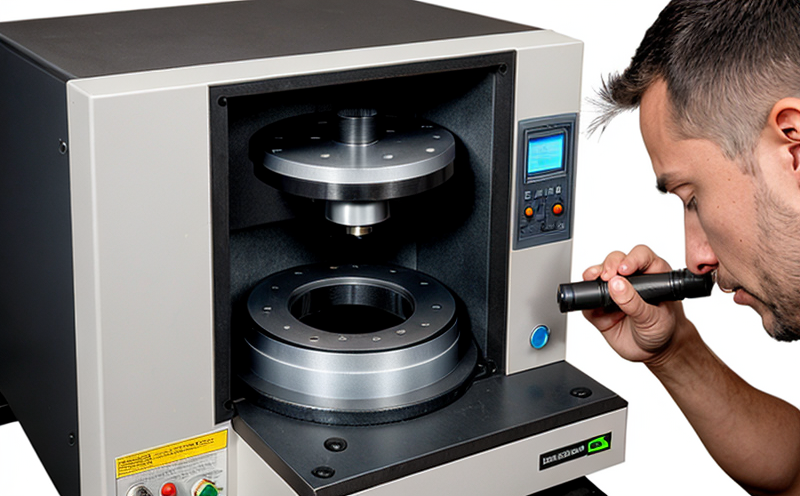ASTM E381 Macroetch Testing of Steel Products
The ASTM E381 macroetch testing method is an essential non-destructive technique used to evaluate the surface and near-surface structure of steel products. This method is particularly useful in detecting heat-treatment distortions, segregation, and other microstructural issues that could affect the mechanical properties of the material.
Macroetching involves etching a polished surface with an acid solution or other appropriate reagent to reveal the underlying microstructure. The process is critical for quality assurance and compliance, especially in sectors like aerospace, automotive, and manufacturing where the integrity of steel components is paramount.
The test is conducted by first preparing the specimen's surface using abrasive grinding techniques followed by polishing. Once polished, the specimen is etched with a solution that selectively removes metal from certain areas, revealing grain structure and other features. The resulting etch pattern provides valuable insights into the homogeneity of the steel microstructure.
For accurate interpretation of results, it's crucial to follow ASTM E381 strictly. This includes using the correct etchant concentration and ensuring the specimen is left in the solution for an optimal time period. Failure to adhere to these guidelines can lead to misleading results or incomplete analysis.
The significance of this test extends beyond quality assurance; it also aids in process improvement by identifying areas where modifications might enhance product performance. By understanding the microstructure through macroetch testing, manufacturers can optimize heat treatment processes and ensure consistent product quality across batches.
Why It Matters
The integrity of steel products is critical in various industries, including aerospace, automotive, construction, and manufacturing. Issues like segregation or poor grain distribution can lead to reduced mechanical properties, which might result in premature failure under operational stress.
ASTM E381 macroetch testing helps mitigate these risks by providing a detailed view of the microstructure that is otherwise invisible without specialized techniques. This information is invaluable for ensuring compliance with industry standards and specifications, thereby enhancing product reliability and safety.
In sectors like aerospace, where even minor flaws can have catastrophic consequences, ASTM E381 macroetch testing serves as a critical quality control measure. It ensures that the steel components used are free from defects and meet stringent performance requirements set by regulatory bodies.
For manufacturers looking to improve their production processes, this test offers insights into potential areas for optimization. By identifying issues early in the manufacturing process, companies can implement corrective actions before they affect large quantities of products, reducing waste and improving overall efficiency.
Scope and Methodology
| Scope | Description |
|---|---|
| Surface Preparation | The specimen must be polished to a mirror finish using progressively finer grits of sandpaper. This ensures that any surface irregularities are minimized, allowing for accurate etching. |
| Etching Process | An appropriate etchant is applied to the polished surface according to ASTM E381 guidelines. The specimen is then left in the solution for a specific time period before being thoroughly rinsed and dried. |
| Inspection | The etched specimen is visually inspected under a microscope to evaluate the grain structure, segregation, and other features of interest. |
The ASTM E381 standard provides detailed instructions on how to perform each step accurately. Compliance with these guidelines ensures consistent results across different labs and tests, facilitating reliable quality control in manufacturing processes.
Eurolab Advantages
At Eurolab, we pride ourselves on providing top-tier services that meet or exceed international standards. Our experienced team of technicians ensures precise execution of ASTM E381 macroetch testing, delivering accurate and reliable results every time.
We utilize state-of-the-art equipment to achieve the highest level of accuracy in our tests. This includes high-quality polishing tools and precision etching solutions that adhere strictly to ASTM guidelines. Our commitment to quality is reflected in our ISO 9001 accreditation, ensuring that all processes are continuously improved and refined.
Our clients benefit from Eurolab's deep expertise in metallurgical testing. With a reputation for excellence built over decades of service, we offer unparalleled support and guidance throughout the testing process. Whether you need assistance with specimen preparation or interpretation of results, our team is here to help.





